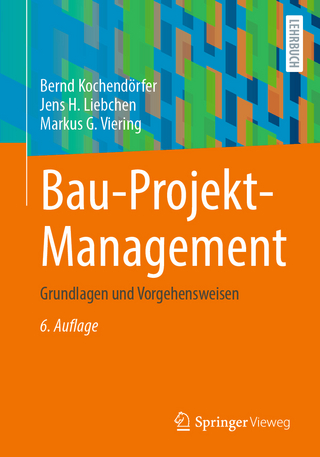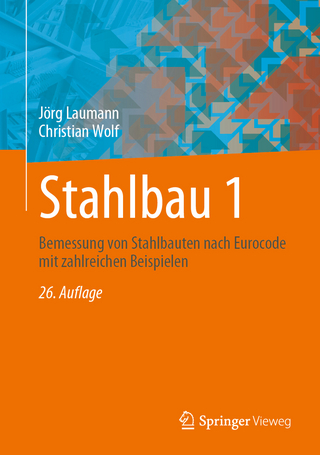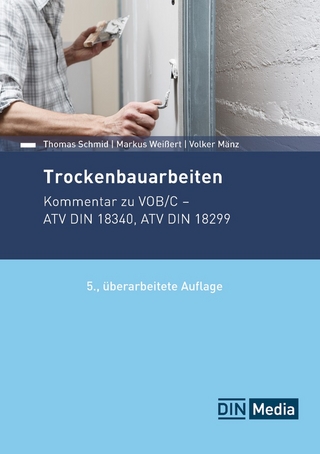
Computational Analysis and Design of Bridge Structures
CRC Press (Verlag)
978-1-138-74837-8 (ISBN)
Bridge structures vary considerably in form, size, complexity, and importance. The methods for their computational analysis and design range from approximate to refined analyses, and rapidly improving computer technology has made the more refined and complex methods of analyses more commonplace. The key methods of analysis and related modeling techniques are set out, mainly for highway bridges, but also with some information on railway bridges. Special topics such as strut-and-tie modeling, linear and nonlinear buckling analysis, redundancy analysis, integral bridges, dynamic/earthquake analysis, and bridge geometry are also covered. The material is largely code independent. The book is written for students, especially at MSc level, and for practicing professionals in bridge design offices and bridge design authorities worldwide.
Effectively Analyze Structures Using Simple Mathematical Models
Divided into three parts and comprised of 18 chapters, this text:
Covers the methods of computational analysis and design suitable for bridge structures
Provides information on the methods of analysis and related modeling techniques suitable for the design and evaluation of various types of bridges
Presents material on a wide range of bridge structural types and is fairly code independent
Computational Analysis and Design of Bridge Structures covers the general aspects of bridges, bridge behavior and the modeling of bridges, and special topics on bridges. This text explores the physical meanings behind modeling, and reveals how bridge structures can be analyzed using mathematical models.
Chung C. Fu, PhD, PE, FASCE, is research professor and bridge consultant, and director of the Bridge Engineering Software and Technology (BEST) Center at the University of Maryland, College Park, Maryland. His publications include 50 referred publications, 20 publications, more than 100 presentations and conference proceedings, and 50 public technical reports. His areas of expertise cover all types of structural engineering, bridge engineering, earthquake engineering, computer application in structures, finite element analysis, ultra high-performance concrete, steel and composite applications, including fiber-reinforced polymer and high-performance steel for innovative bridge research and construction, bridge management, testing (material and structural), and nondestructive evaluation applications. Shuqing Wang , PhD, PE, is a senior GIS specialist on contract with the Federal Highway Administration; research fellow/bridge consultant in bridge software development and structural analysis at the BEST Center, University of Maryland, College Park, Maryland; and former director of the Bridge CAD Division at the Department of Bridge Engineering, Tongji University, People’s Republic of China. His areas of expertise span from leading-edge software technologies to bridge engineering practices, especially modern bridge modeling and structural analysis system development. His research interests now focus on visualizing structural behavior in real time and representing bridge geometric and mechanics models in three dimensions.
Part I. General. Introduction. Approximate and refined analysis methods. Numerical methods in bridge structure analysis. Part II. Bridge behavior and modeling. Reinforced concrete bridges. Prestressed/post-tensioned concrete bridges. Curved concrete bridges. Straight and curved steel I-girder bridges. Straight and curved steel box girder bridges. Arch bridges. Steel truss bridges. Cable-stayed bridges. Suspension bridges. Part III. Special topics of bridges. Strut-and-tie modeling. Stability. Redundancy analysis. Integral bridges. Dynamic/earthquake analysis. Bridge geometry. References. Index.
| Erscheinungsdatum | 29.07.2022 |
|---|---|
| Zusatzinfo | 57 Tables, black and white; 405 Illustrations, black and white |
| Verlagsort | London |
| Sprache | englisch |
| Maße | 156 x 234 mm |
| Gewicht | 884 g |
| Themenwelt | Technik ► Bauwesen |
| Technik ► Bergbau | |
| Technik ► Umwelttechnik / Biotechnologie | |
| ISBN-10 | 1-138-74837-4 / 1138748374 |
| ISBN-13 | 978-1-138-74837-8 / 9781138748378 |
| Zustand | Neuware |
| Informationen gemäß Produktsicherheitsverordnung (GPSR) | |
| Haben Sie eine Frage zum Produkt? |
aus dem Bereich


